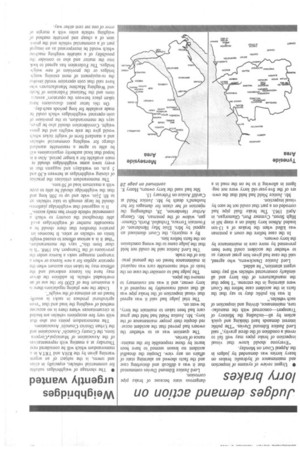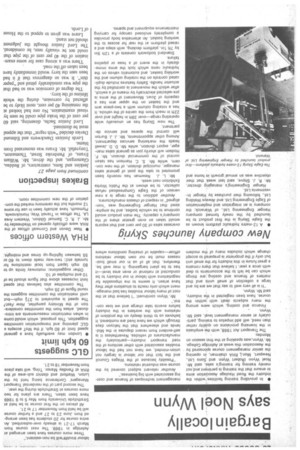Judges demand action on lorry brakes
Page 29

Page 30

If you've noticed an error in this article please click here to report it so we can fix it.
• Urgent review of systems of inspection and maintenance of hydraulic brakes on heavy lorries was demanded by judges in the Appeal Court on Monday.
"Everyone should know that visual inspection of brake pipes may well fail to reveal a condition of the direst gravity," said Lord Justice Edmund Davies. "The public interest demands hard thinking and quick action by all—including the Ministry of Transport—concerned with the manufacture, maintenance, driving and inspection of such vehicles."
It was his public duty to say that the facts in the accident case before the Court were alarming in the extreme. "I hope that the manufacturers of this lorry and all similarly constructed vehicles will pay them urgent attention," he added.
Lord Justice Danckwerts, who agreed, said the case had given him great anxiety as to whether the accident could have been prevented by more care in maintenance by the lorry owners.
In the case before the court a postman was killed when the brakes of a 13-ton loaded Albion lorry failed on a steep hill in High Street, Cymmer Port, Glamorgan, in April 1963. The brake fluid pipe had corroded on a part that could not be seen by visual inspection.
Mr. Justice Nield had held that the owners of the five-year-old lorry were not negligent in allowing it to be on the road in a dangerous state because of brake Pipe corrosion.
Lord Justice Edmund Davies commented that it was a difficult and disturbing case and the facts showed an alarming state of affairs on any view. Despite the dreadful accident no. lesson seemed 'to have been learnt by those responsible for the maintenance of lorries.
The question was as to whether the owners had proved that the accident occurred despite their proper maintenance of the lorry. Mr. Justice Nield had held that great care had been taken to maintain the lorry, he went on.
The trial judge had said it was agreed that visual inspection of the brake pipe was all that could reasonably be required of a lorry owner, and it was not customary to remove the pipes.
The judge had to consider the case on the basis of what reasonable care was required in maintenance based on the general practice of the trade.
The Lord Justice said he could not hold that the judge came to the wrong conclusion on the facts before him.
By a majority, the Court dismissed an appeal by Mrs. Elsie May Henderson, of Fountain Terrace, Trehafod, Forth, Glamorgan, widow of the postman, Mr. George Arthur Henderson, 28, challenging the rejection of her claim for damages for her husband's death by Mr. Justice Nield at Cardiff Assize on February 15.
She had sued the lorry owners, Henry E. continued on page 28 Jenkins and Sons, contractors, of Beddau, Glamorgan, and the driver, Mr. William Evans, of Pembroke Street, Thomaston, Tonyrefail. Mr. Evans was exonerated from blame.
Lords Justices Danckwerts and Edmund Davies decided "with regret" that the appeal must be dismissed.
Lord Justice Sachs, dissenting, said 60 per cent of the brake pipe could be seen by visual examination. No one had looked at the remaining 40 per cent, most likely to be affected by corrosion, during the whole lifetime of the lorry.
The degree of corrosion was so bad that the pipe was considerably pitted and "paper thin". It was so dangerous that if it had been seen the lorry would immediately have been taken off the road.
There was a strong case for some examination of the 40 per cent of the pipe that could not be visually seen, he considered. The Lord Justice thought the judgment should not stand.
Leave was given to appeal to the House of Lords.




























































































































































